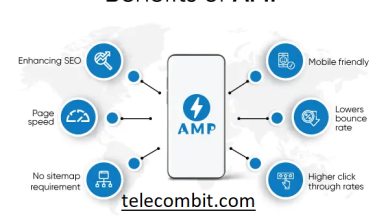The Art of Web Design: Creating Engaging and User-Friendly Websites

In the digital age, a well-designed website is crucial for establishing a strong online presence. Web design is not just about aesthetics; it’s about creating an engaging and user-friendly experience for visitors. The Art of Web Design: Creating Engaging and User-Friendly Websites. In this article, we will explore the key elements of web design that contribute to a successful website.

Understanding Your Target Audience
Before diving into the design process, it’s essential to understand your target audience. Conduct thorough research to identify their demographics, preferences, and behavior patterns. This knowledge will help you tailor your design elements to meet their specific needs and create a website that resonates with them.
Understanding your target audience goes beyond basic demographics. It involves delving into their motivations, pain points, and goals. By gaining deep insights into your audience, you can create a website that not only appeals visually but also addresses their needs effectively.

User-Friendly Navigation
A user-friendly website is easy to navigate, allowing visitors to find what they’re looking for quickly. Implement a logical and intuitive navigation structure, using clear headings and subheadings. Utilize dropdown menus or a search function to enhance user experience and make content easily accessible.
Effective navigation is all about simplicity and clarity. Consider using breadcrumbs, which provide users with a trail of links showing their location within the website’s hierarchy. Additionally, including a site map can give visitors an overview of the website’s structure and help them navigate to their desired pages effortlessly.

Responsive Design
In today’s mobile-dominated world, responsive design is a must. Ensure your website is optimized for various devices, such as smartphones, tablets, and desktops. Responsive design guarantees that your website looks and functions seamlessly, regardless of the screen size, enhancing user satisfaction and engagement.
Mobile responsiveness goes beyond adjusting the layout to fit different screens. It involves optimizing the entire user experience for mobile devices. Consider factors such as touch-friendly buttons, streamlined forms, and concise content to ensure a smooth and enjoyable mobile experience.

Engaging Visuals
Visual elements play a crucial role in web design. Use high-quality images, videos, and graphics that align with your brand identity and resonate with your target audience. Eye-catching visuals not only capture attention but also convey your message effectively. However, be mindful of page loading times and optimize image sizes for better performance.
When incorporating visuals into your web design, consider the overall visual hierarchy. Highlight important elements using size, color, and positioning. Use visuals strategically to guide users’ attention and create a visually appealing and engaging experience.

Compelling Content
Engaging and informative content is a cornerstone of web design. Craft compelling headlines, subheadings, and body content that captivate your audience. Use bullet points, numbered lists, and relevant keywords to enhance readability and improve search engine optimization (SEO). Remember, quality content keeps visitors on your website longer and encourages sharing and repeat visits.
In addition to textual content, consider using other types of content to enrich the user experience. Incorporate videos, infographics, or interactive elements to provide information in an engaging and memorable way. Make sure your content is scannable, with clear headings, subheadings, and paragraphs, to accommodate users who prefer to skim rather than read in-depth.

Conclusion
Web design is an art that combines aesthetics, usability, and functionality to create engaging and user-friendly websites. By understanding your target audience, implementing user-friendly navigation, utilizing responsive design, incorporating engaging visuals and compelling content, maintaining consistent branding, providing clear call-to-actions, optimizing loading speed, and adopting a mobile-first approach, you can create a website that captivates visitors and drives meaningful engagement. Remember, the art of web design is an ongoing process of iteration and improvement, so be sure to continuously monitor and refine your website to meet the evolving needs of your audience.




